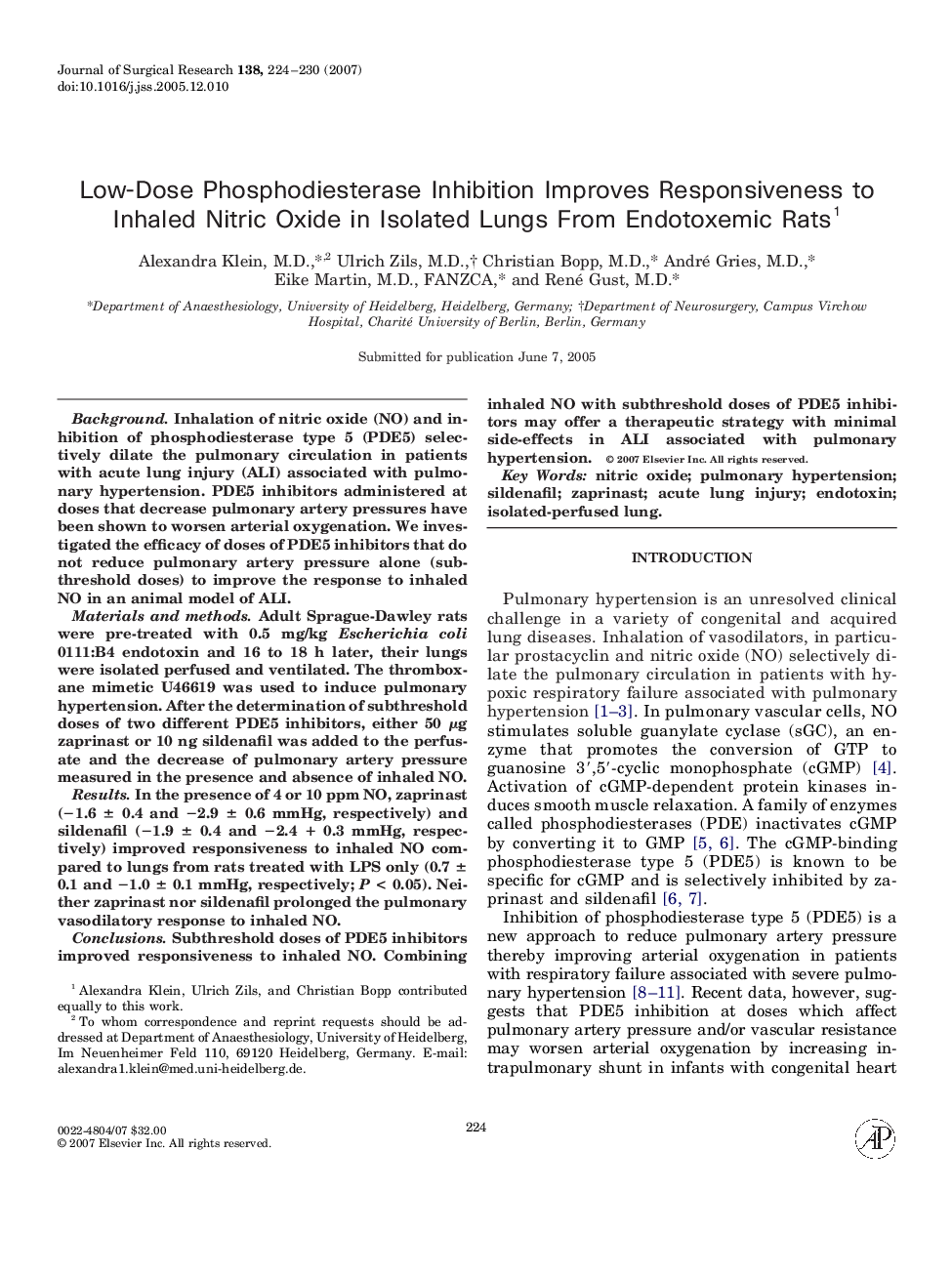| Article ID | Journal | Published Year | Pages | File Type |
|---|---|---|---|---|
| 4305125 | Journal of Surgical Research | 2007 | 7 Pages |
BackgroundInhalation of nitric oxide (NO) and inhibition of phosphodiesterase type 5 (PDE5) selectively dilate the pulmonary circulation in patients with acute lung injury (ALI) associated with pulmonary hypertension. PDE5 inhibitors administered at doses that decrease pulmonary artery pressures have been shown to worsen arterial oxygenation. We investigated the efficacy of doses of PDE5 inhibitors that do not reduce pulmonary artery pressure alone (subthreshold doses) to improve the response to inhaled NO in an animal model of ALI.Materials and methodsAdult Sprague-Dawley rats were pre-treated with 0.5 mg/kg Escherichia coli 0111:B4 endotoxin and 16 to 18 h later, their lungs were isolated perfused and ventilated. The thromboxane mimetic U46619 was used to induce pulmonary hypertension. After the determination of subthreshold doses of two different PDE5 inhibitors, either 50 μg zaprinast or 10 ng sildenafil was added to the perfusate and the decrease of pulmonary artery pressure measured in the presence and absence of inhaled NO.ResultsIn the presence of 4 or 10 ppm NO, zaprinast (−1.6 ± 0.4 and −2.9 ± 0.6 mmHg, respectively) and sildenafil (−1.9 ± 0.4 and −2.4 + 0.3 mmHg, respectively) improved responsiveness to inhaled NO compared to lungs from rats treated with LPS only (0.7 ± 0.1 and −1.0 ± 0.1 mmHg, respectively; P < 0.05). Neither zaprinast nor sildenafil prolonged the pulmonary vasodilatory response to inhaled NO.ConclusionsSubthreshold doses of PDE5 inhibitors improved responsiveness to inhaled NO. Combining inhaled NO with subthreshold doses of PDE5 inhibitors may offer a therapeutic strategy with minimal side-effects in ALI associated with pulmonary hypertension.
